Archaeology & History
Archaeologists in Britain Have Uncovered New Sections of a Roman Barricade That Guarded London 2,000 Years Ago
The little-known riverside wall shows the Romans put defense over trade.
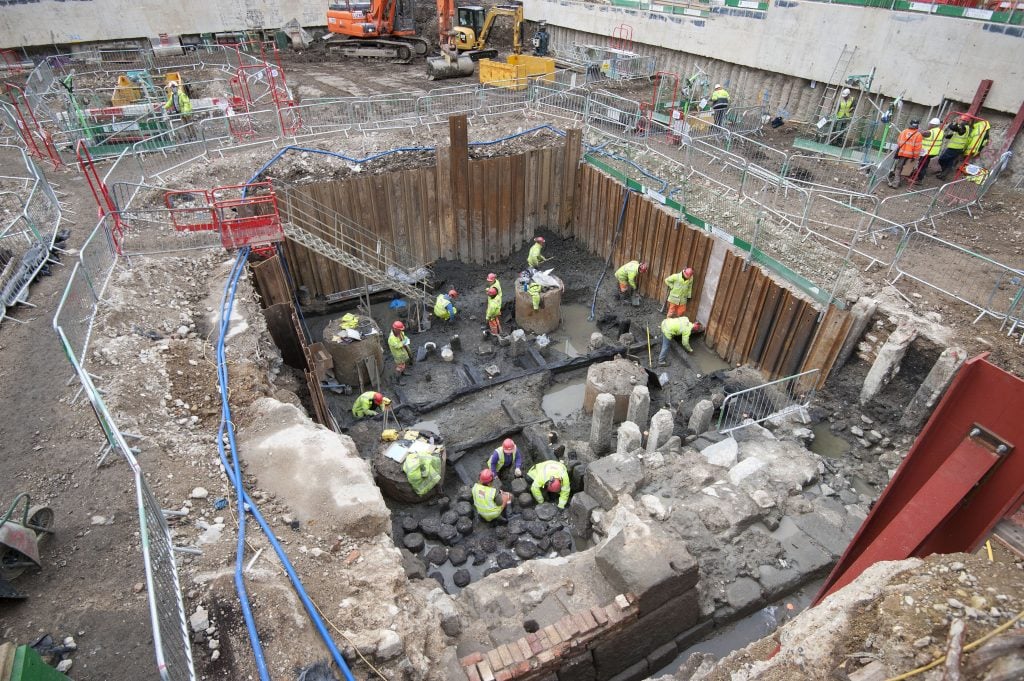
The little-known riverside wall shows the Romans put defense over trade.

Richard Whiddington

Romans occupying London in the 3rd century were so fearful of attacks from unruly local tribes that they encircled the city in protective walls, including one severing the provincial capital from its bustling quays.
While sections of the inland wall are well-studied and remain visible in today’s London, the riverside portion had largely been forgotten. Building off archaeological work in the 1970s, the Museum of London Archaeology (MOLA) carried out excavations between 2006 and 2016 and has uncovered three extensive stretches.
These newly excavated sections measure a total of 330 feet, and are located by the Riverbank House on Upper Thames Street, as well as Sugar Quay and Three Quays on Lower Thames Street. They are providing insights into period masonry and the broader architecture in Roman London.
These 2,000-year-old riverside walls have now been afforded the highest level of heritage protection by England’s Department for Culture, Media and Sport and join the only other uncovered section of riverside wall, which is located at the Tower of London.
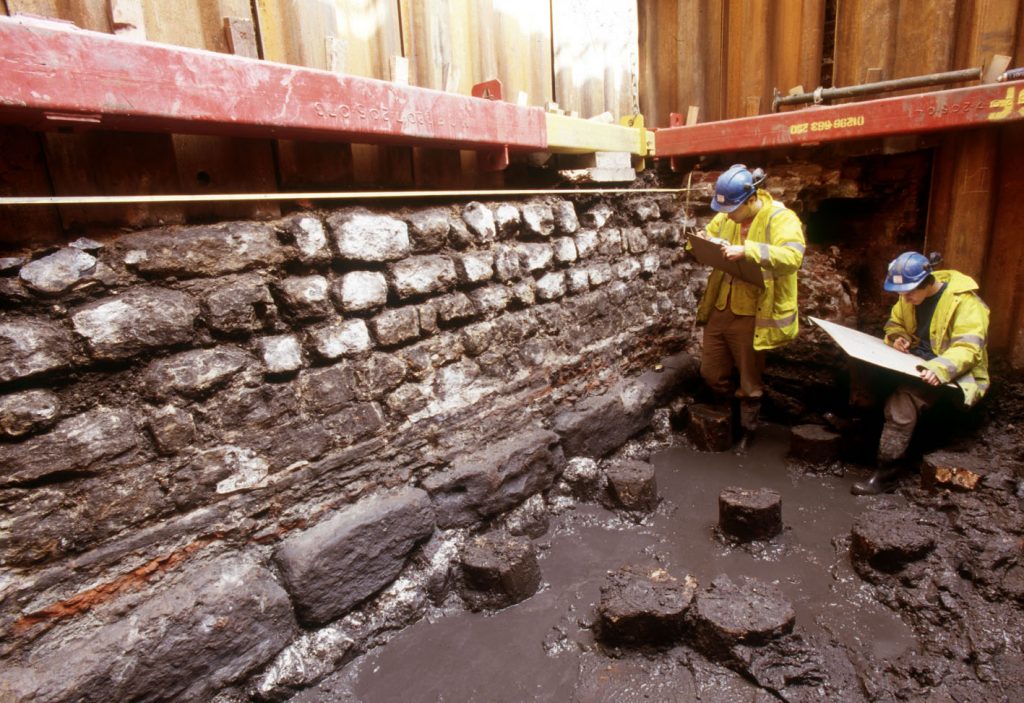
Recording of the Roman riverside wall at Riverbank House. Photo: MOLA.
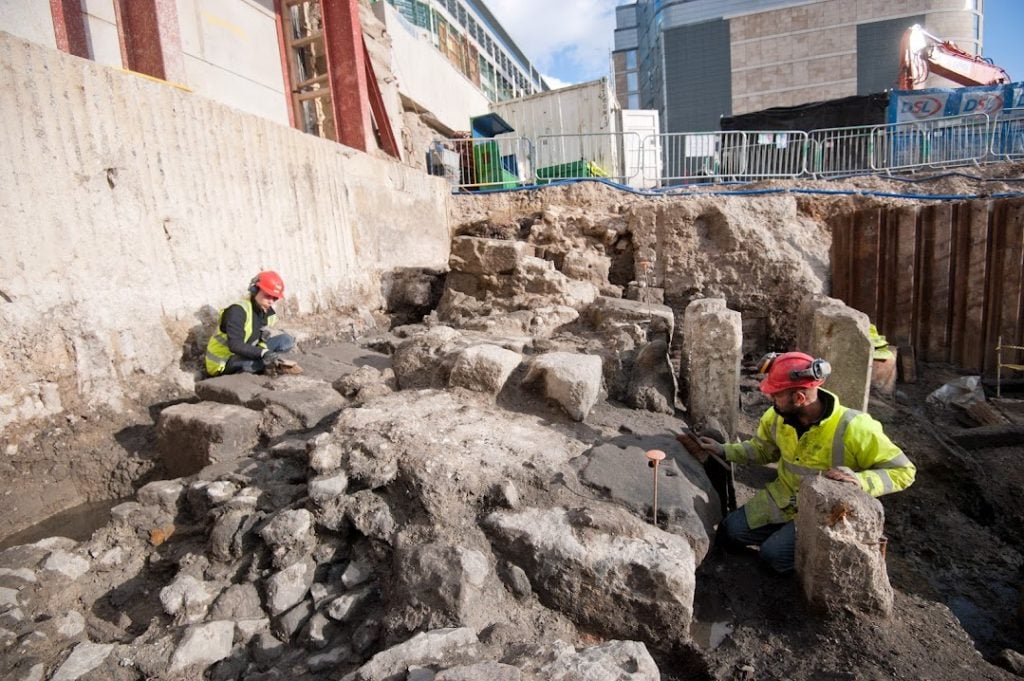
MOLA archaeologists clean the monumental masonry of the Roman riverside wall at Sugar Quay. Photo: MOLA
In addition, well-preserved wooden wharf and quay structures that were discovered in the process of excavating the walls have been included in the new protection. The Roman timber quays were used to load and unload boats and the discoveries included a box quay from 133 C.E. Collectively, they demonstrate the considerable investment made in London’s Roman port.
The wall, built from Kentish ragstone, reached up to 20 feet in height, had a circumference of two miles, and was unmatched by any other town at the time. The wall not only demonstrated Roman practicality, prioritizing defense over commerce, but was a status symbol of Londinium, the epicenter of Roman Britain.
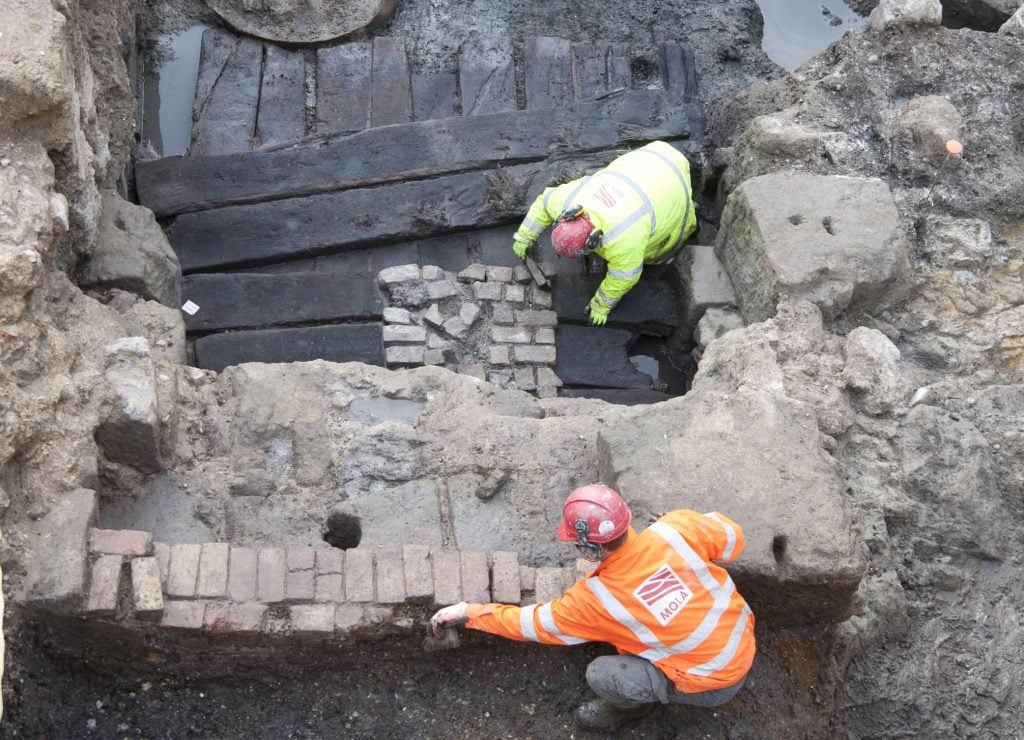
MOLA archaeologists clean the top of the Roman riverside wall at Sugar Quay. Photo: MOLA
“We’re extremely excited that the Roman riverside wall is getting the recognition and protection that it deserves,” MOLA’s Sadie Watson said in a statement. “This is particularly fitting as it marks almost 50 years since MOLA’s predecessor, Department of Urban Archaeology, first identified the Roman riverside wall on one of the first professional excavations in London.”
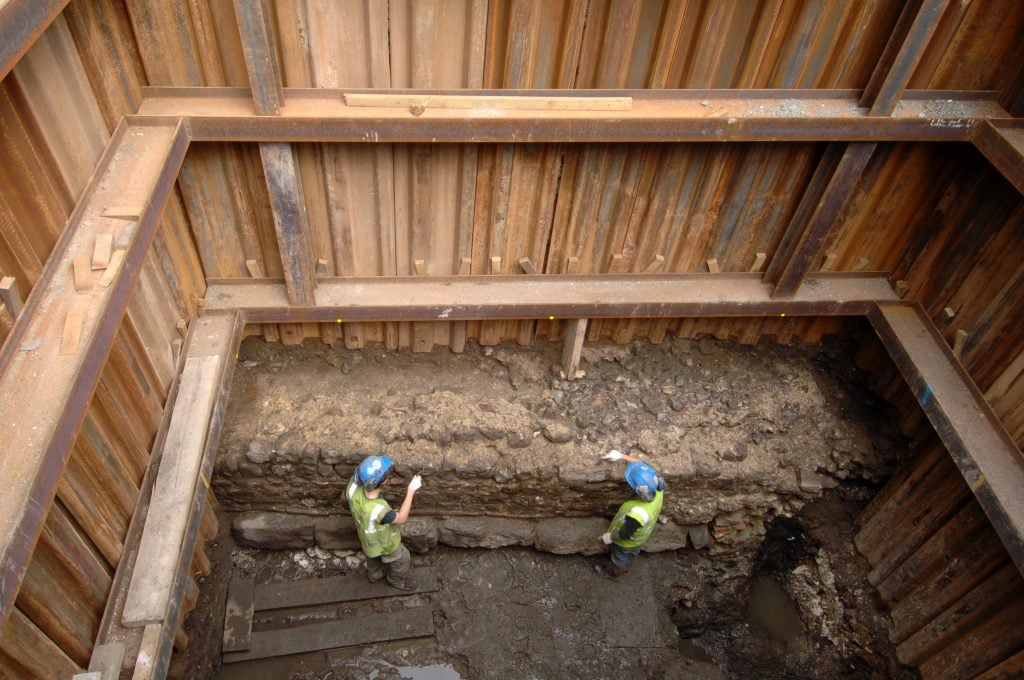
Excavation of Roman riverside wall at Riverbank House. Image: MOLA
All three stretches of wall remain in situ beneath modern buildings Upper and Lower Thames Street, once the northern edge of the river Thames.
“Even in a really dense city like London, built up over 2,000 years, there are still mysteries to be revealed right beneath our feet,” said Duncan Wilson, chief executive of Historic England. “The riverside wall remains an intriguing element of Roman London which raises almost as many questions as it answers.”
More Trending Stories: